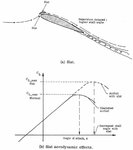kool kitty89
Senior Master Sergeant
I didn't say anything about developing the HeS 011 preferentially. I actualy think it was not that great of an idea to go with (design was good but not practical for the time frame). It did manage to produce the originally specified ~2860 lbf, though the expected 3000+ lbf advancement was never reached.
I suggested continued work on the HeS-30 (109-006) class 1 axial design, which was developing very well by the time it was canceled in 1942. It was nearing production quality and thrust appeared to be about to exceed that of the 004 engine (900+ kp) It would have certainly been ready for production before the 003 and possibly even before the 004B. With about half the weight and size of the 004 with similar thrust and good SFC, probably similar to the 003's 1.4 lb/lbf/hr. But at the time the RLM thought that the 004 and 003 were far ahead and about to be ready for production and that they simply didn't need another axial design.
I think it would have been best to focus on the less problematic class I designs. Also I said Ohain should have tried working with axial turbines like Whittle did, as the radial turbine (though good for an uncooled design) was heavy, and too large to use turbine alloys practically and couldn't be air-cooled practically. I also flame-cans (opposed to annular combustors) would have been much easier to work with. Axial turbines had also been explored more than radial-inflow types had. (like centrifugal compressors over axial) Such an engine with air-bleed cooled turbine should have offered higher operating conditions and have higher efficiency, and would be easier to scale-up to a class II sized design. (ie 2,700 lbf Halford H.1 in England)
As I mentioned above.
I certainly agree that Britain was slowed by 2 years due to Rover's mismach, as at the time Rover was chosen Whittles achievements were only weeks behind Ohain's. And in some ways ahead, as Whittle's WU could run on Diesel while the HeS 1 ran only on Hydrogen, and Heinkel's team was still considering gasoline as fuel for the HeS 3. Of course Heinkel's own project was later held up by several months due to delay in aquire Hirth due to political problems (possibly due in part to Messersmitt). And Muller wasn't receptive to Hirth help, which finally happend after Muller left iirc.
Though I'm not sure if the Derwent (and Nene-Derwent-V) would have developed the same if R.R. had worked with PowerJets earlier, possibly the W.2 700 (2,500 lbf) would have been produced instead, though the W.2Y (Derwent) may have been developed too, I'm just not sure. Of course the Halford H.1 Goblin (2,700 lbf) could have also been used if not diverted to the Vampire, or perhaps R.R. could have licensed production of the Goblin for use in the Meteor Mk II. As I still doubt a Nene or especially Derwent V engine would have been available in numbers by early 1945, with decent reliabillity. (as even the J33 was struggling in productin and reliabillity at this time)
I suggested continued work on the HeS-30 (109-006) class 1 axial design, which was developing very well by the time it was canceled in 1942. It was nearing production quality and thrust appeared to be about to exceed that of the 004 engine (900+ kp) It would have certainly been ready for production before the 003 and possibly even before the 004B. With about half the weight and size of the 004 with similar thrust and good SFC, probably similar to the 003's 1.4 lb/lbf/hr. But at the time the RLM thought that the 004 and 003 were far ahead and about to be ready for production and that they simply didn't need another axial design.
I think it would have been best to focus on the less problematic class I designs. Also I said Ohain should have tried working with axial turbines like Whittle did, as the radial turbine (though good for an uncooled design) was heavy, and too large to use turbine alloys practically and couldn't be air-cooled practically. I also flame-cans (opposed to annular combustors) would have been much easier to work with. Axial turbines had also been explored more than radial-inflow types had. (like centrifugal compressors over axial) Such an engine with air-bleed cooled turbine should have offered higher operating conditions and have higher efficiency, and would be easier to scale-up to a class II sized design. (ie 2,700 lbf Halford H.1 in England)
As I mentioned above.
I certainly agree that Britain was slowed by 2 years due to Rover's mismach, as at the time Rover was chosen Whittles achievements were only weeks behind Ohain's. And in some ways ahead, as Whittle's WU could run on Diesel while the HeS 1 ran only on Hydrogen, and Heinkel's team was still considering gasoline as fuel for the HeS 3. Of course Heinkel's own project was later held up by several months due to delay in aquire Hirth due to political problems (possibly due in part to Messersmitt). And Muller wasn't receptive to Hirth help, which finally happend after Muller left iirc.
Though I'm not sure if the Derwent (and Nene-Derwent-V) would have developed the same if R.R. had worked with PowerJets earlier, possibly the W.2 700 (2,500 lbf) would have been produced instead, though the W.2Y (Derwent) may have been developed too, I'm just not sure. Of course the Halford H.1 Goblin (2,700 lbf) could have also been used if not diverted to the Vampire, or perhaps R.R. could have licensed production of the Goblin for use in the Meteor Mk II. As I still doubt a Nene or especially Derwent V engine would have been available in numbers by early 1945, with decent reliabillity. (as even the J33 was struggling in productin and reliabillity at this time)


